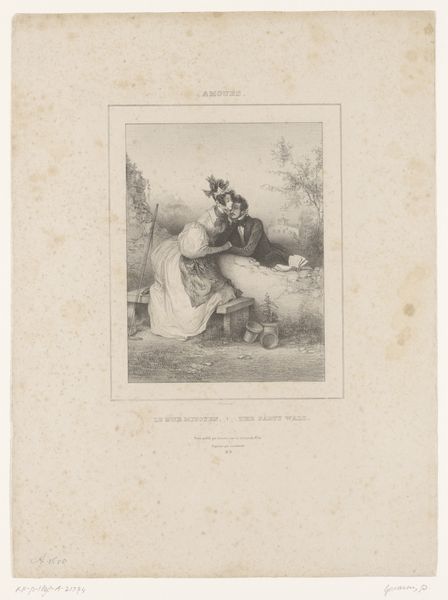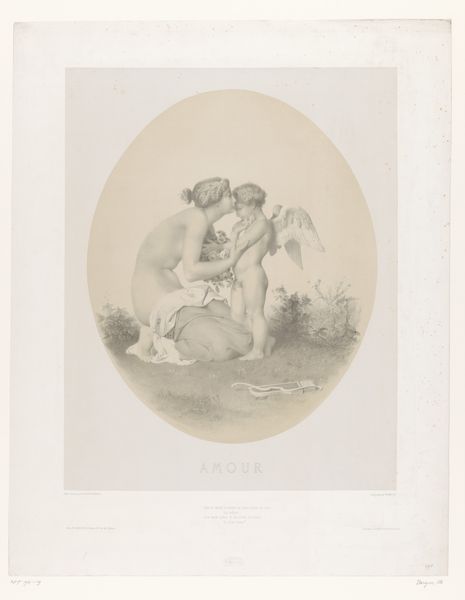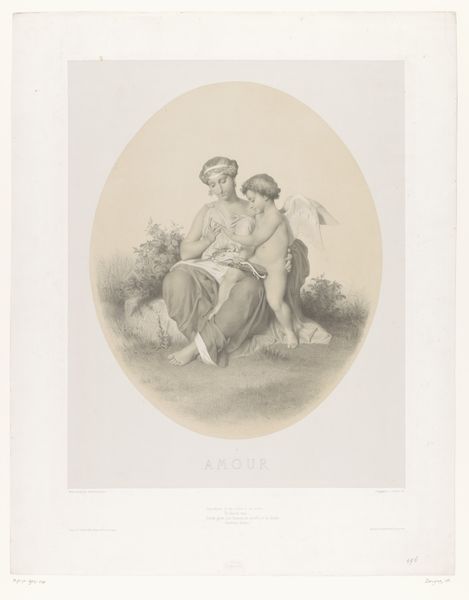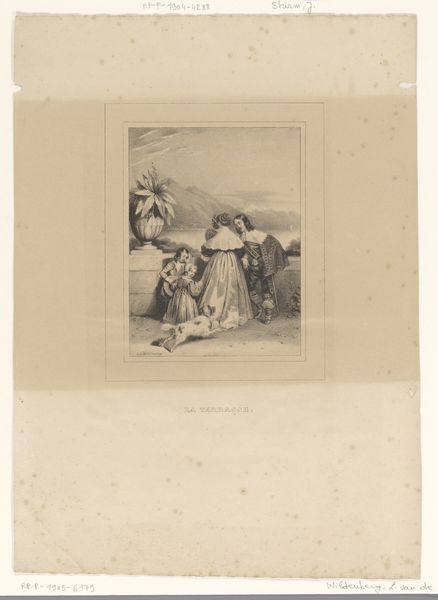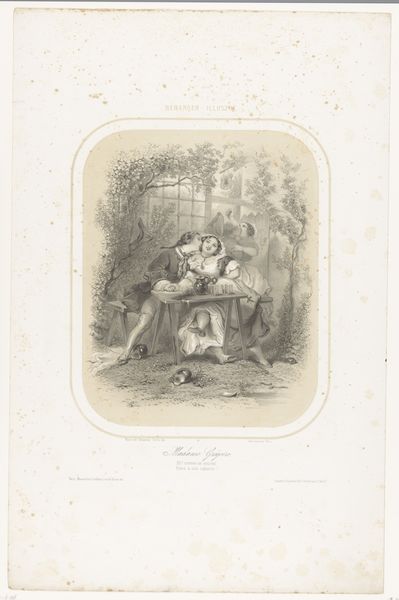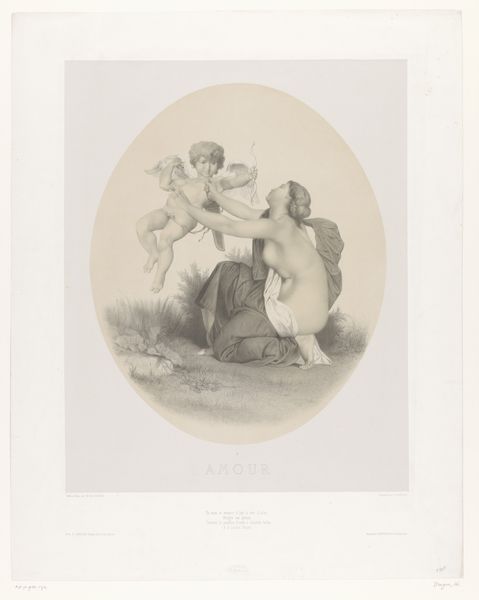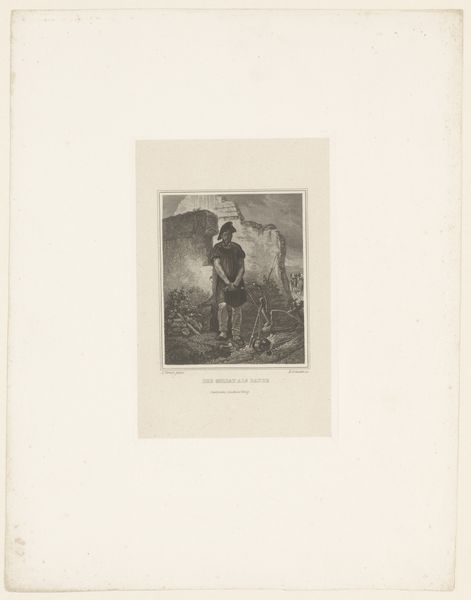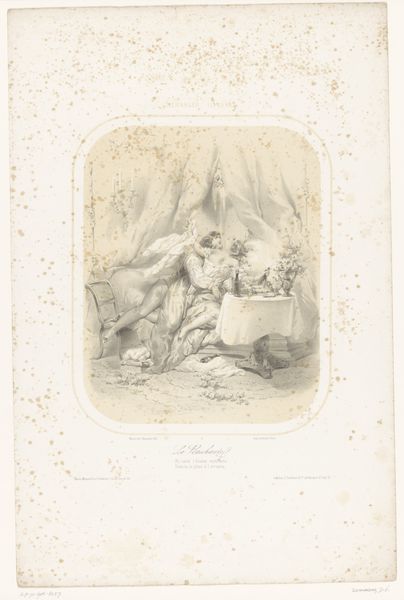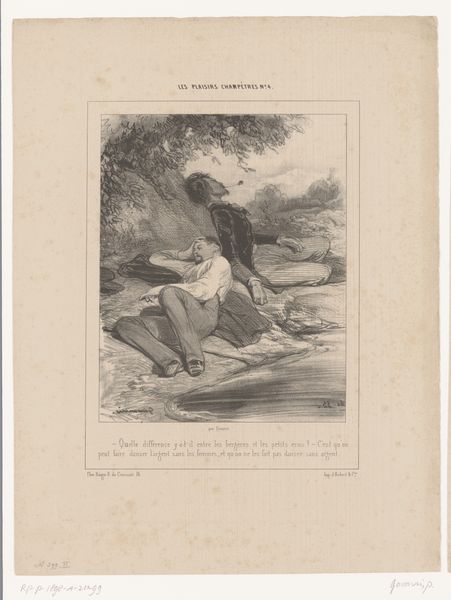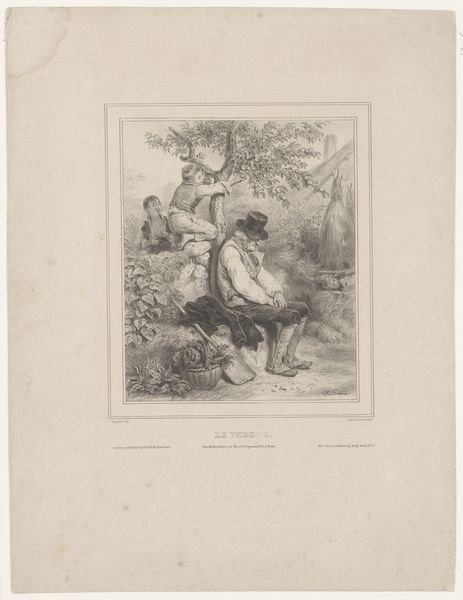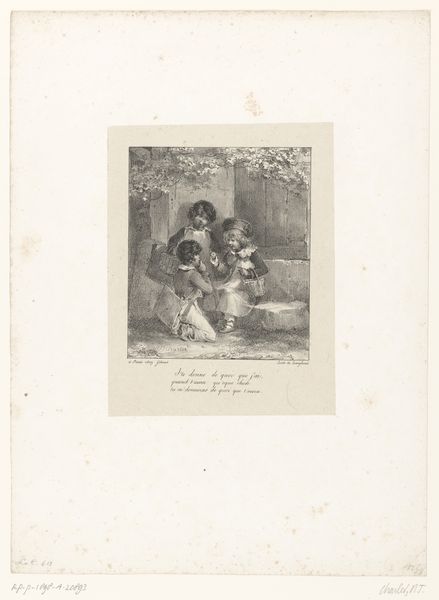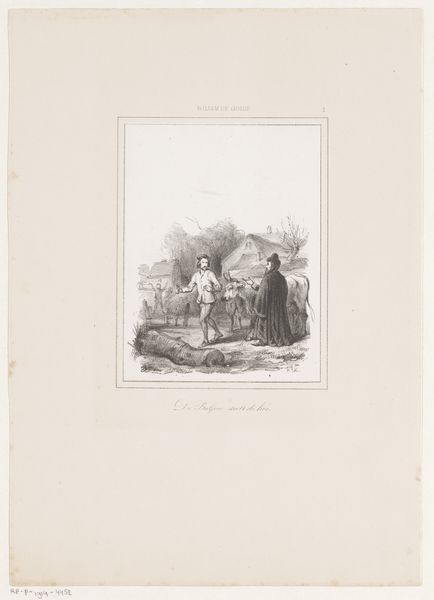
Dimensions: height 593 mm, width 437 mm
Copyright: Rijks Museum: Open Domain
Johann Wölfle created this lithograph of a herder boy with two goats. The image evokes pastoral innocence, but the symbolism of the goatherd and his flock is richer than it first appears. The shepherd has been a potent symbol in art history. Consider the “Good Shepherd” in early Christian art, a motif borrowed from classical antiquity and imbued with new spiritual meaning. The shepherd's crook, now merely a herding tool, once signified guidance and authority. Similarly, the goat has undergone numerous symbolic transformations, from a symbol of virility and abundance in ancient pagan rituals to its association with the demonic in Christian iconography. This seemingly simple scene, therefore, reverberates with echoes of ancient myths and religious allegories. It invites us to contemplate the enduring human relationship with nature and the shifting cultural meanings we project onto the pastoral world. The image stirs in us a deep-seated longing for a simpler existence and the primal connection to the land. The herder boy is not merely a figure in a landscape; he is a vessel for our collective memories.
Comments
No comments
Be the first to comment and join the conversation on the ultimate creative platform.
